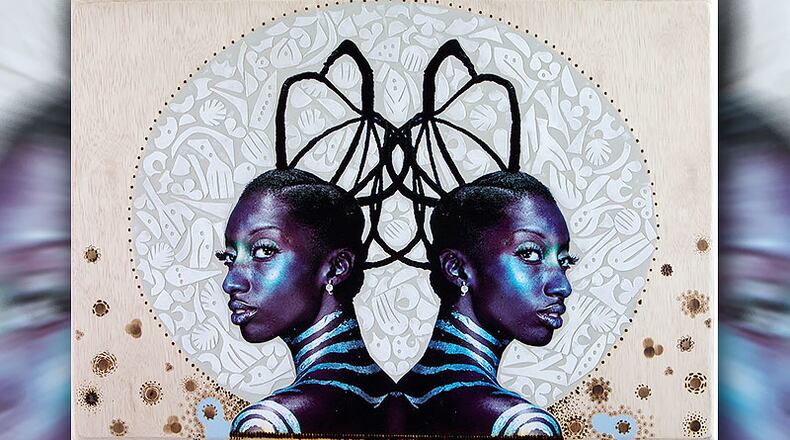From the gingerbread trim on the front porch of this 1857 Victorian home to that first creak of the well-seasoned floorboards, you know this is not your typical art space when you pass the threshold of Hammonds House Museum in Atlanta’s West End.
A museum founded on fascinating complexities, Hammonds House presents artwork that often deals frankly with America’s ugly past of slavery, segregation and its ongoing racism.
But much of the artwork on display also celebrates black creativity, joyfulness and grit. The staff receives visitors like friends, leading them around the space to talk about the art. It’s an experience that melds the best parts of the South; the hospitality, warmth and respect for what’s come before with a fierce desire to make a better future. It’s also a place unapologetically about the tenacity and resistance of black Americans.
“It was created because African-American artists didn’t have a voice in the larger visual arts marketplace,” when it was founded in 1988. “They were not being shown in major galleries,” says the museum’s executive director Leatrice Ellzy Wright, a woman with a unique vision and voice of her own. She shares Hammonds’ generosity of spirit, but she’s tired too. It’s been a painful few weeks.
In the wake of the murders of Breonna Taylor, Ahmaud Arbery and George Floyd and the ongoing attention to systemic racism, many organizations — corporations, the media and also Atlanta arts organizations — are reflecting on how much commitment they have shown to racial equality.
But Hammonds is one Atlanta institution that doesn’t have to worry about its dedication to black voices. The museum has a 30-year history of promoting art by artists of African descent, and a permanent collection of more than 450 works by luminaries including Romare Bearden, Elizabeth Catlett, Jacob Lawrence, Hale Woodruff and Amalia Amaki.
Its mellow, comfortable ambiance invites visitors to put down their guard and explore ideas, guided by cultural workers like Wright, with a finesse for navigating different worlds. The daughter of an activist father born into a family of educators, Wright grew up in Wilmington, Delaware attending an all-white Catholic girls school before heading to Nashville for a head-swimming change of scenery at all-black Tennessee State University.
“We end up having these impromptu discussions around race and race relations in the country all the time actually,” says Wright, who often finds museum visitors camped out in a window seat discussing current events, lingering hours after they’ve checked out an exhibition.
» RELATED: Legendary actress Cicely Tyson receives Peabody Career Achievement Award
“It’s a safe space to explore these issues. And we have always been that,” says Wright. “When people enter the door, they feel like they’ve entered someone’s home.”
Following jobs at the National Black Arts Festival and Woodruff Arts Center, Wright is only the third executive director of Hammonds. But she’s already made remarkable inroads in increasing the visibility of the space. That’s due in large part to a series of smart, well-received exhibitions from renowned artist Carrie Mae Weems, and from emerging voices like Shanequa Gay and Masud Olufani, artists who have addressed issues of black identity, oppression, Atlanta’s wildfire gentrification and the rich, vibrant history of the West End.
Wright has also increased the museum’s digital presence, an especially important move after the coronavirus quarantine required galleries and museums to go virtual. Under her tutelage, Hammonds has hosted virtual art openings, author talks and poetry readings.
“Atlanta has so much promise,” says Wright, “if we could just get to a place where we deal with our issues.”
But if you want to make positive change, you have to tackle the problems too — poverty, housing, inequality. And you need artists involved, Wright says, who will feature an exhibition this September inspired by events unspooling in the world now, “The Art of Protest” centered on the intersection of social justice and artmaking.
“Bring in people who see things very differently.”
EXHIBIT
The current show, “Nu Africans,” runs through Sept. 13.
The museum reopens to the public, by reservation, on July 8.
Hammonds House Museum, 503 Peeples St. SW, Atlanta. 404-612-0481, hammondshouse.org
About the Author
Keep Reading
The Latest
Featured




